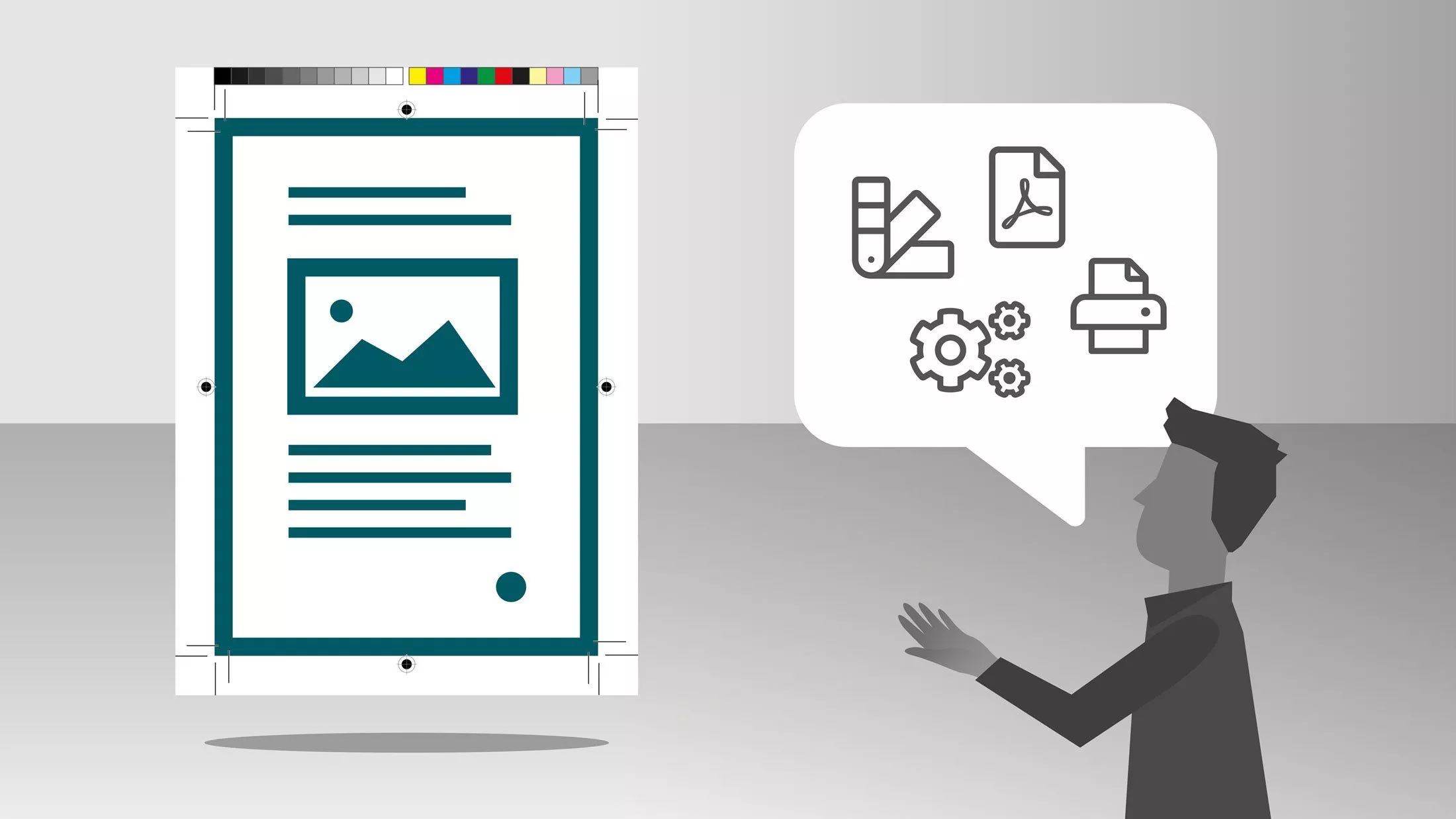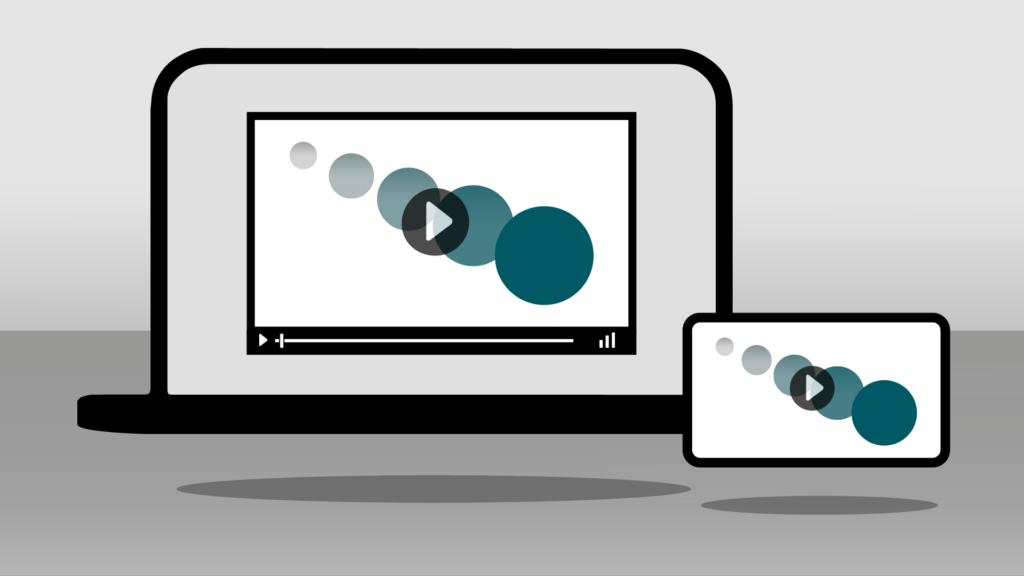… and what to consider
Many things can be printed, although professional print documents are required to ensure high quality results. Here is a short overview of what you need to bear in mind:

1. Format and Trimming
The baseline for every print document is the end format of the desired print product. To be added to this format is the area cut away after printing, the so-called trim. Close to the trim area is the area in which no relevant information (text) should be contained – the security margin.
Surfaces or images, which reach »to the edge« are called »borderless«. To avoid unwanted white edges, these surfaces should be applied up to the end of the trim.
Data of the end format, as well as the required trim margin are to found either online (data sheet/spec sheet) with the respective desired print product (for standard products) or you inquire over telephone about the specifications.
2. Colours and colour profile
This point is one of the most precarious, as colour management is associated with considerable expertise. Most do not know that screens function in a different colour mode than print. If data is erroneously delivered in RGB mode (depiction on screens – red, green and blue), then they must be converted in CMYK mode (colour mixing system for print based on cyan, magenta, yellow and black »Key«), because they otherwise cannot be printed. The result in print might work by chance, but could also fail – the printing company is not in any way responsible!
Different printing techniques require furthermore diverse printing profiles, which determine the respective possible colour space and colour application. Therefore, caution: Colours on screen are not reliable – they could look totally different in print. This is particularly the case, if you work with standard screens. Approximate colour can only be ensured on calibrated professional screens – and even here only with simulation of the according print profile (here more infos).
Caution with full tone colours!
These special, premixed colour mixtures are sometimes used instead of standard CMYK colour formulas. There are products, which are only produced with special colours. The correct colour codes must be indicated in the print documents.
3. Images and quality
A picture speaks in a proverbial sense more than a thousand words – the power of the image should not be underestimated. Here in particular, pay attention to good quality and the required resolution. Image quality is often equated with image resolution, but these are indeed two different things. A high resolution, for example standard for qualitative digital cameras, does not quarantee the quality of the photo itself. On small displays, photos often appear better than they are. Image flaws, like »fuzziness« or blur, which can occur with suboptimal light conditions, become a problem for image use in larger formats. In the best case, pictures are taken by a profi (master of photography) or you purchase professional photos from a stock photo platform.
If neither is possible, then professional image editing can rescue some of these problem issues. Needed here is the right equipment (calibrated special screen) and a trained eye (here to learn more about image editing)
What many forget – the theme RGB and CMYK also applies to photos: Digital images are always original in RGB mode and must be converted in an appropriate CMYK profile. This should be controlled and optimised on the respective print profile by professional image editing. Also applies here: When the appearance on screen is OK, this does not mean it is suitable for print resp. that it looks nice in print.
Specifications of the printing company for the required resolution are given in the measurement unit dpi (=dots per inch). Requirements vary according to the print product and should be taken from the respective data sheets. Depending of image quality, photos with too low resolution can be enlarged with the assistance of image editing software – however with evident limitations.
4. File type and other requirements
The preferred data type is PDF/X format – with embedded fonts. If there is a problem with the embedding of fonts, then all texts must be converted into paths. Exact details about respective desired PDF standards are to be found in data sheets of the printing company. Caution – it is also possible to save a PDF in RGB mode. This is particularly utilised when a PDF file is sent via email or should be made available to download. This is certainly NOT a professional print document.
To ensure typeface legibility, the minimal size of 6 Pt. should not be reduced. Font colour for running text should be applied in pure black so that the letters are clearly and explicitly depicted. The minimal line width for dark lines is 0,25 Pt. and for light lines on a dark background 0,5 Pt.
Conclusion
The production of professional print documents is often more complex than assumed. First the combination of professional knowledge about printing technique, the right facilitation of layout programs, a calibrated special screen, as well as experience and a trained eye guarantee qualitative printing results.
Would you like professional support for your print documents?
I am happy to assist you!




